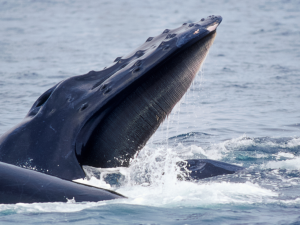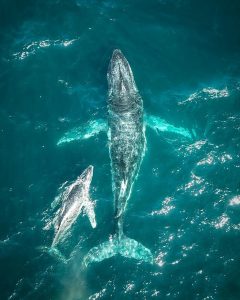The Arctic has warmed 4 times faster than the rest of the globe since 1979, with sea ice extent decreasing 13% per decade. Increased warming and the continued loss of sea ice will have significant negative impacts on marine mammals that rely heavily on sea-ice for survival. Amongst these species, the bowhead whale, the only baleen whale that spends its entire life in the Arctic, with its Pacific population wintering in the northern Bering Sea. They then migrate north through the Bering Strait into the Chukchi Sea where they will spend summer and autumn, before migrating back south through the Bering Strait for the winter.

A recent study published in the journal Movement Ecology seeked to better understand potential implications of sea ice loss for the Pacific bowhead whales. Analysis of the whales’ calls and songs, coupled with information about sea ice and weather conditions, indicated that the bowheads’ fall migration to the Bering Sea was delayed in years when there was less sea ice and that some whales are wintering instead in the southern Chukchi Sea. The researchers also found that spring northward migration was earlier in years when there was less sea ice. Indigenous Traditional Knowledge also suggests that less ice and more open water has shifted the timing of the spring migration by about a month.
The Bering Strait represents the gateway between the Arctic and Pacific, with anything moving between the two having to pass through the strait. With sea ice continuing to decline this gateway is open, for longer periods of time, to both potential predators such as killer whales and commercial vessels, that have not previously overlapped into bowhead whale territory in the winter.

Source: Movement Ecology – 7th of February 2023








